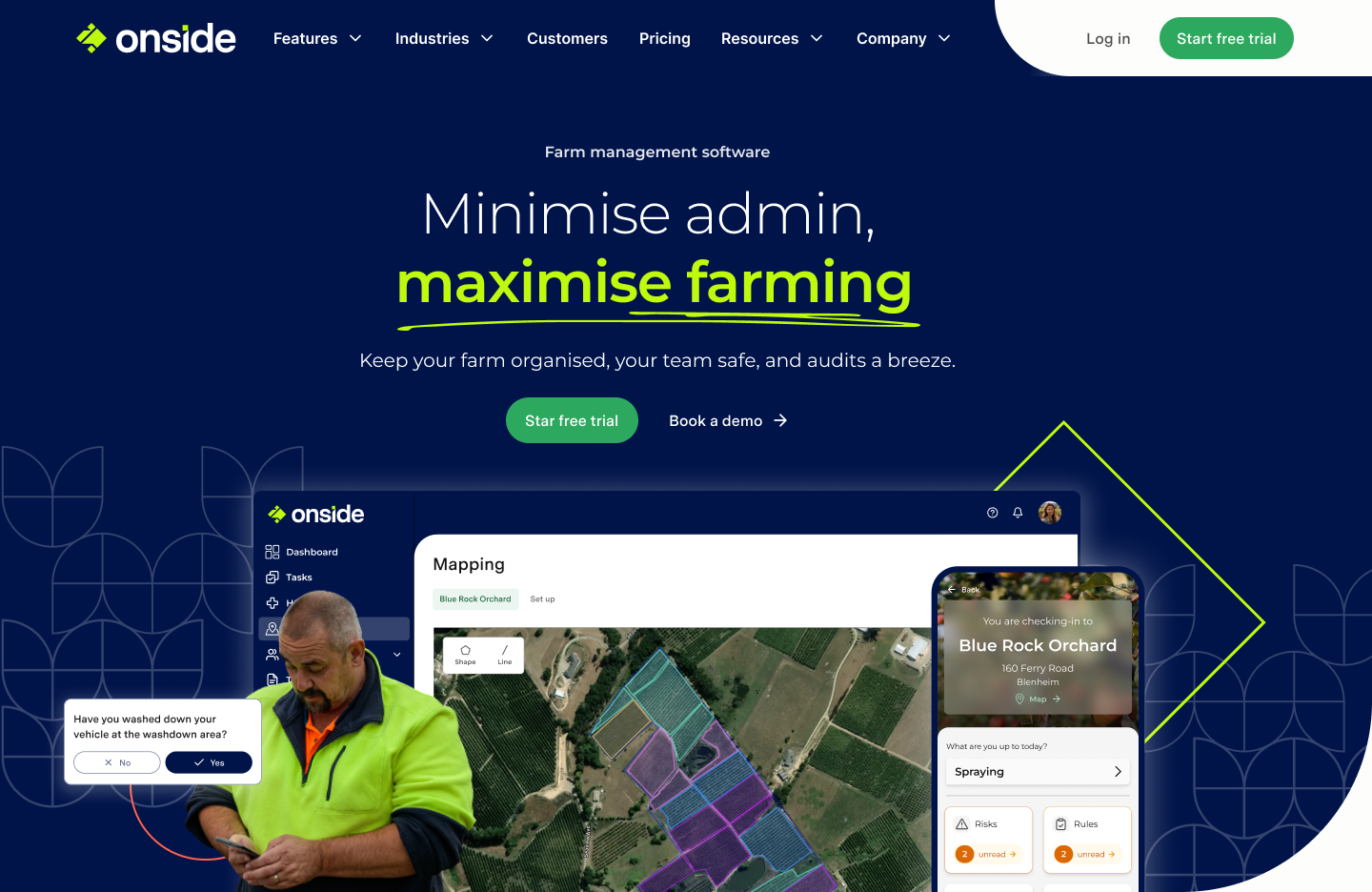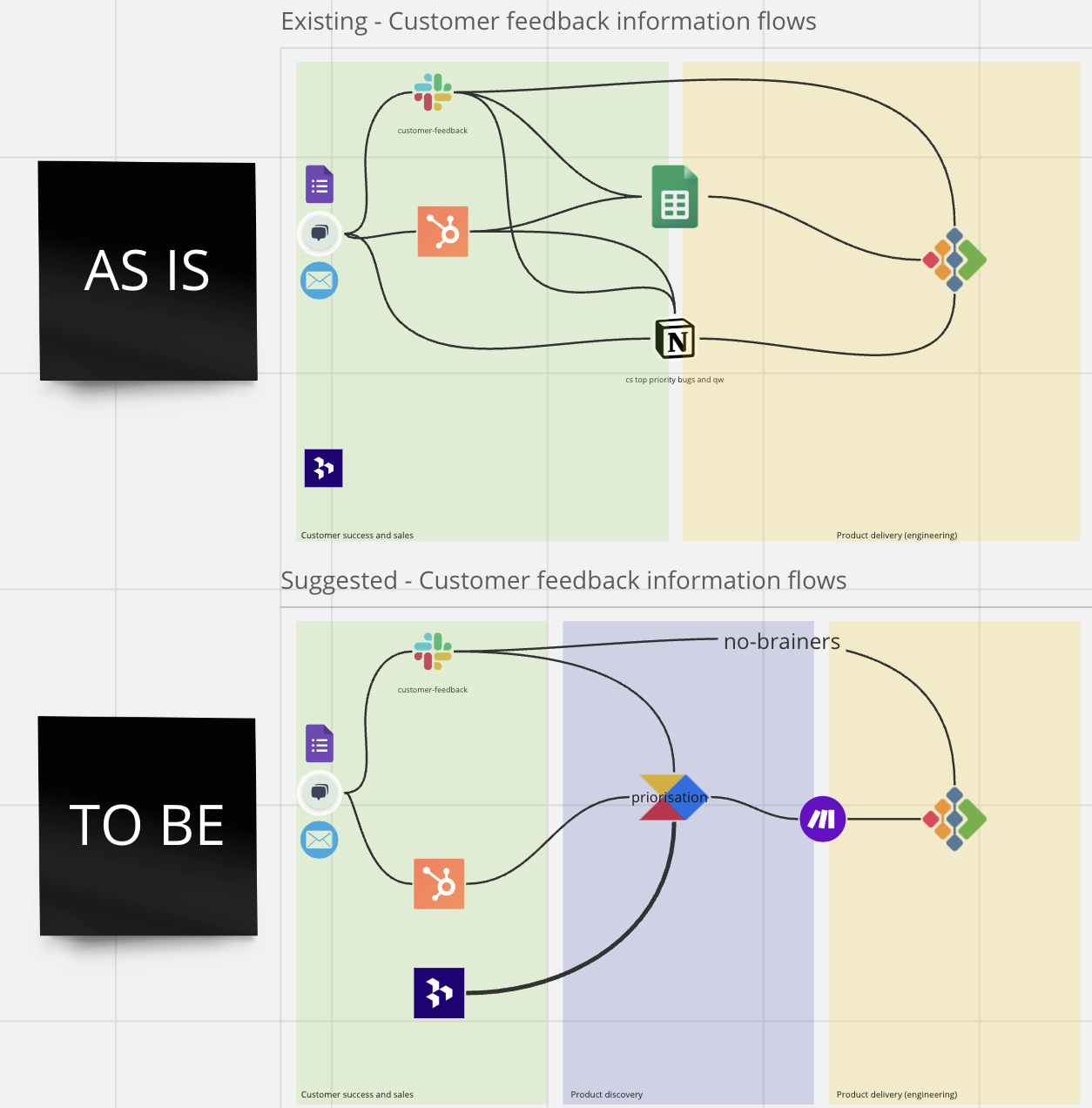About Onside
Onside is an intuitive mobile app that helps rural people manage visitors, biosecurity and health & safety. Capturing visitor records in real-time, ensuring visitors are properly inducted, aware of hazards, and less likely to bring biosecurity threats to geo-fenced properties. Visitors using the app can check-in and check-out of properties based on their location.

My role
During a brief period of team observation, I pinpointed two primary root causes underlying most of the reported issues. Firstly, there was an inefficient process for handling customer insights. Secondly, product ideas lacking a clear problem definition were directly sent to the development team without prior refinement or requirements gathering. To address these challenges and strive for operational excellence, I chose to focus on both aspects.
From insights to product features
The diagram below elucidates the evolution of the information flow from insight to product idea, comparing the before and after states.

Contrastingly, in the revised scenario illustrated, all insights coalesce into a centralized repository on Product Board.
The platform's seamless integration capabilities facilitate the collection of insights and their correlation with product ideas.
Additionally, Product Board serves as an efficient interface with customers, aiding the prioritization process.
The subsequent step involves the transition of ideas to Kanbanize, an organization tool akin to Jira, achieved through a Make automation.
This process enhancement yielded several advantages: information no longer got lost, customers and sales staff felt acknowledged, and the team focused on meaningful tasks.
Internally, collaboration between the customer team, marketing team, and development team significantly improved.
Definition of Ready
It became evident that the lack of a Definition of Ready (DOR) was a significant hurdle. Tickets were initiated in development without a clear understanding of the scope. To address this, I organized a collaborative workshop using Miro, allowing every team member to contribute their perspectives. The outcome was a collectively agreed-upon DOR, outlining the essential elements a ticket must have before initiation, categorized into 'must have,' 'nice to have,' and 'should have.' Subsequently, I initiated a weekly refinement meeting involving senior developers and myself to thoroughly define the requirements for upcoming tickets.The diagram below delineates the product development lifecycle at Onside. Novel ideas are recorded on Product Board and subsequently prioritized based on criteria such as impact, effort, and value. Following this, the design phase commences, gradually involving developers in the refinement process. The Definition of Ready (DOR) serves as the delineation point, marking the state gate between the refinement and development phases. Previously, refinements occurred too frequently during development or, worse yet, during testing, resulting in increased costs for scope changes. The implementation of the DOR as a team agreement has streamlined the process, mitigating the occurrence of costly scope changes later in the product development lifecycle.

Outcomes
The implementation of the new insights process, the DOR and the refinement process brought about substantial improvements. The new approach was communicated effectively to various stakeholders to manage expectations proactively. The main outcomes were:
- Cycle Time Reduction: The cycle time for tickets saw a remarkable decrease from 11 days to an efficient 3-4 days. This expedited development and ensured quicker delivery of features and updates.
- Scope Stability: The introduction of regular refinements significantly reduced changes in the scope during development. This newfound stability in scope allowed for more accurate planning and execution.
- Efficient Communication: The streamlined processes not only improved internal collaboration but also facilitated more efficient communication with stakeholders. Expectations were set appropriately, and regular refinements ensured a clear understanding of upcoming tasks.
Conclusion
By addressing the root causes of inefficiencies through the implementation of a Definition of Ready and a structured refinement process, we successfully transformed the team's dynamics. The project's positive impact was felt across the organization, fostering better collaboration, reducing cycle time, and ensuring a more predictable and efficient development process. This case underscores my ability to diagnose and address operational challenges, implement effective processes, and improve cross-functional team dynamics.Links